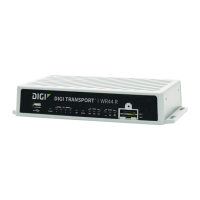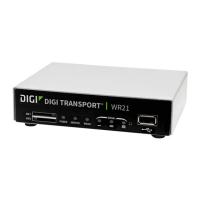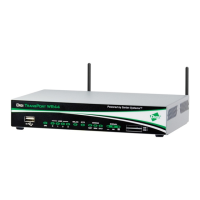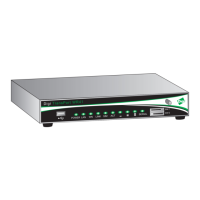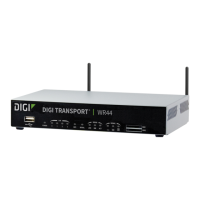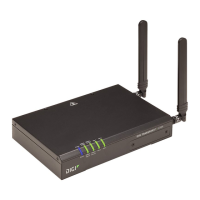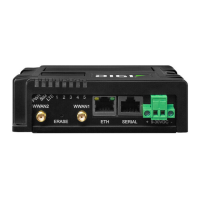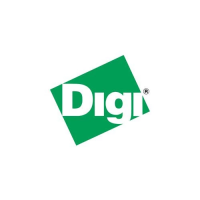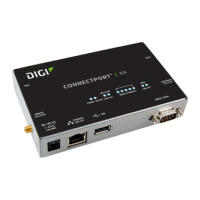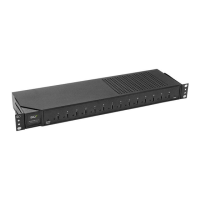Configuring network interfaces Configure ISDN interfaces
Digi TransPort® Routers User Guide
274
Configure the ISDN interface to receive incoming calls
Digi routers can answer incoming B-channel ISDN calls with three main protocols: rate adaption
protocols, LAPB, and PPP. Usually several instances of these protocols exist. This section explains how
answering priorities work for the different protocols.
Protocol entities
The following protocol instances are capable of answering an incoming ISDN call:
Adapt
Adapt instances provide rate adaptation protocols such as V.120 or V.110.
LAPB
LAPB instances allow the router to answer incoming X.25 calls over ISDN. These instances can
optionally connect the caller to a synchronous serial port, an asynchronous serial port bound to a PAD,
or switch the call to another interface.
PPP
IP data tunneled over PPP instances allows remote access to the router’s IP-based management
features and also facilitates onward IP routing through any of the router’s IP enabled interfaces.
The router automatically answers an incoming ISDN call if any of the following statements are true,
subject to the entity’s MSN, Calling Number and Sub-address parameters being set to their default
values:
n An Adapt instance is bound to an asynchronous serial port (ASY) and the answer ring count (S0)
for that serial port is set to 1
n A LAPB instance has its answering parameter set to On
n A PPP instance has its answering parameter set to On
If more than one of these protocols are configured to auto answer then the priority is as follows:
Adapt instances (normally V.120) will take priority over LAPB, which will take priority over PPP. If an
Adapt instance is bound to an asynchronous serial port (ASY port) but the answer ring count (ATS0) is
not set to 1 for that same serial port then Adapt entity will not answer automatically. If any other
protocol entities (such as LAPB, PPP or another Adapt instance) are configured to answer then one of
these protocol entities will answer the call. If no other protocol entities are configured to answer then
a repeating RING message will be sent out of the serial port and the RS232 ring indicator control will
be activated. If a terminal attached to the serial port sends ATA followed by carriage return then the
ISDN call will be answered by the Adapt entity and any incoming data will be channeled out of the
serial port and vice-versa.
Multiple Subscriber Numbers
An MSN (multiple subscriber number) is an alternative number provided by the telephone service
provider which when dialed will also route through to your ISDN line. It is possible to purchase several
MSNs for an ISDN line. This means that in effect one ISDN line can have several ISDN numbers.
Every entity in the router which is capable of answering an ISDN call (Adapt, LABP and PPP) has an
MSN parameter.
You can use a protocol entity’s MSN parameter to:
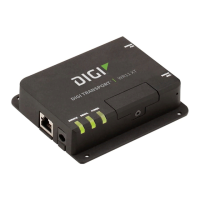
